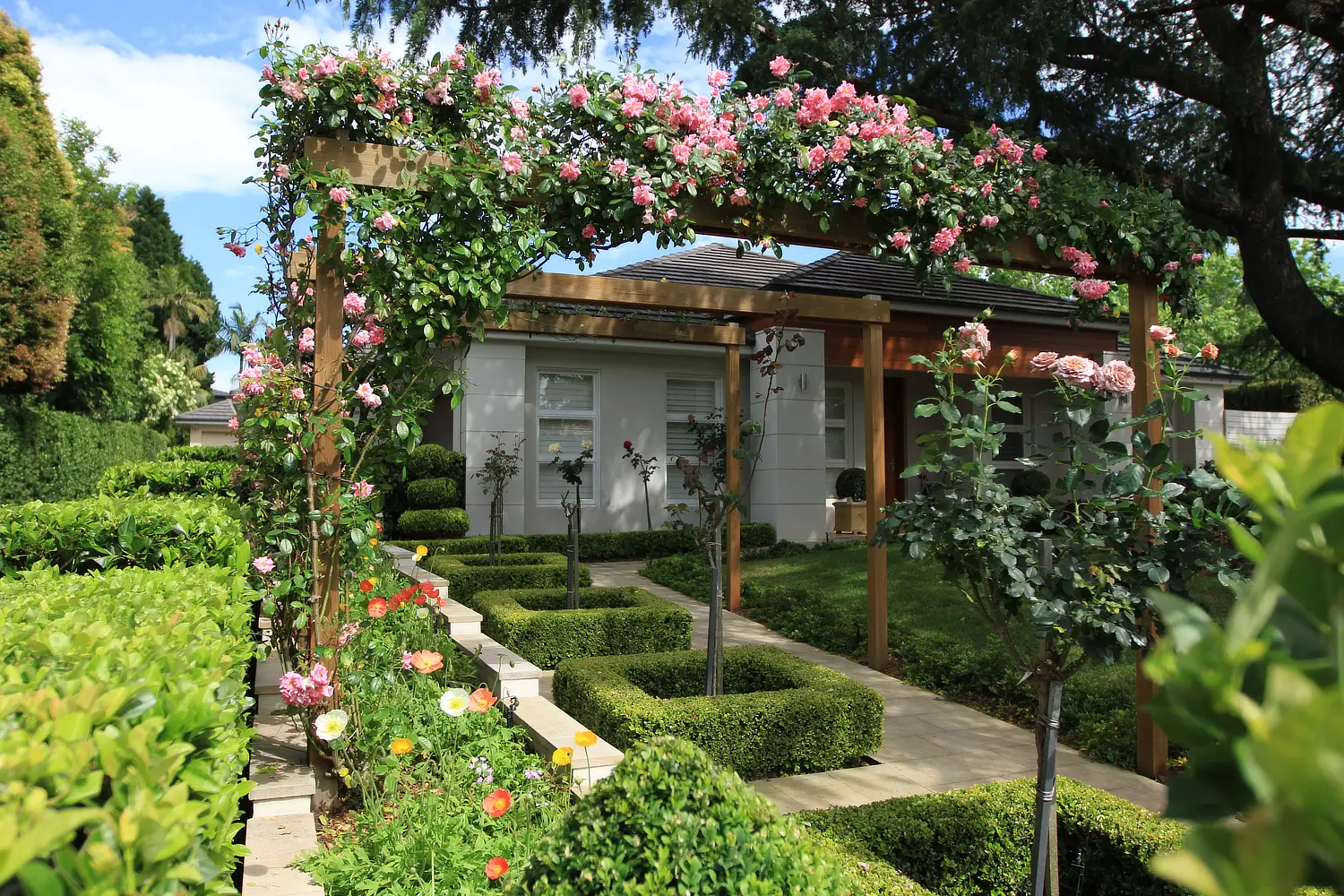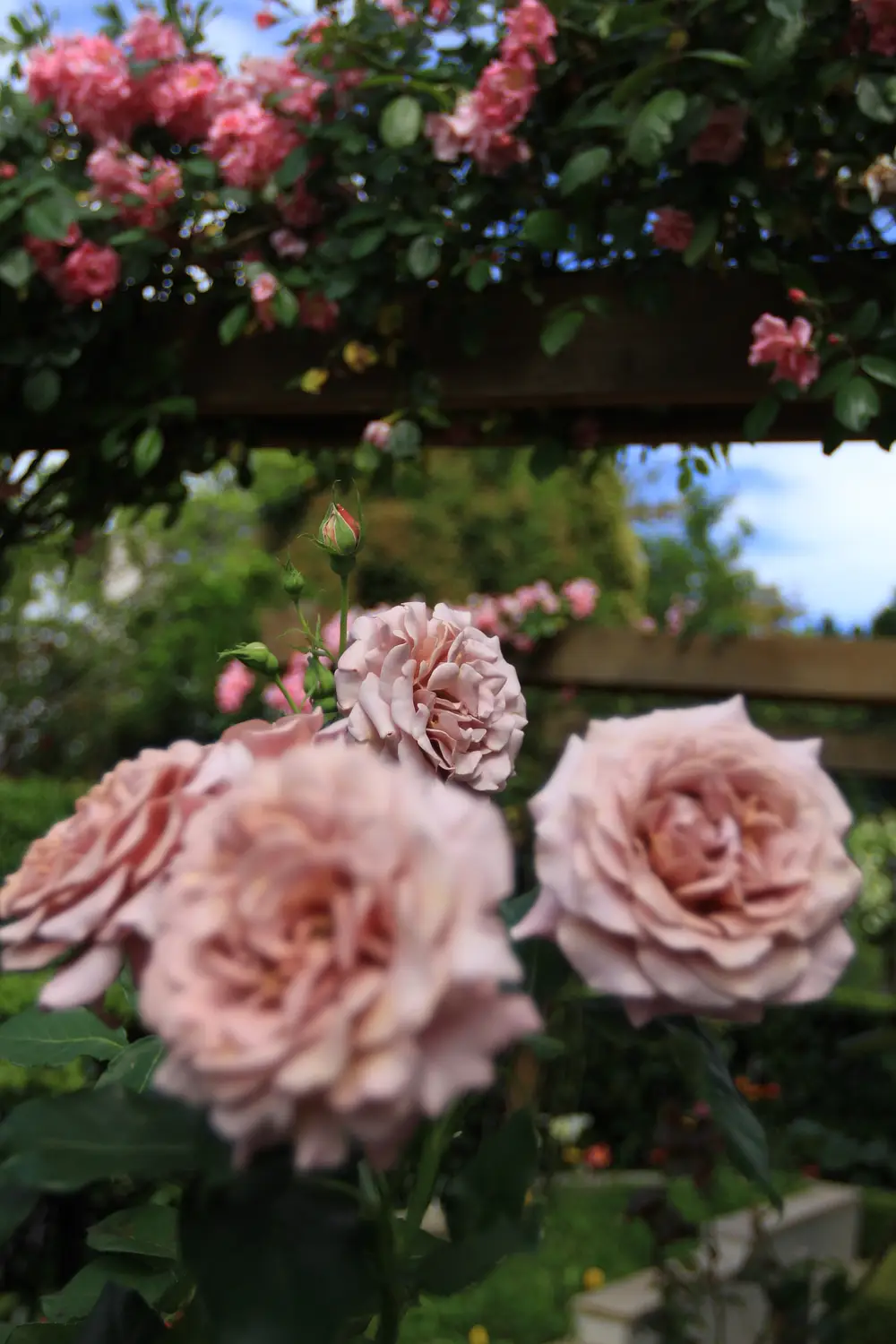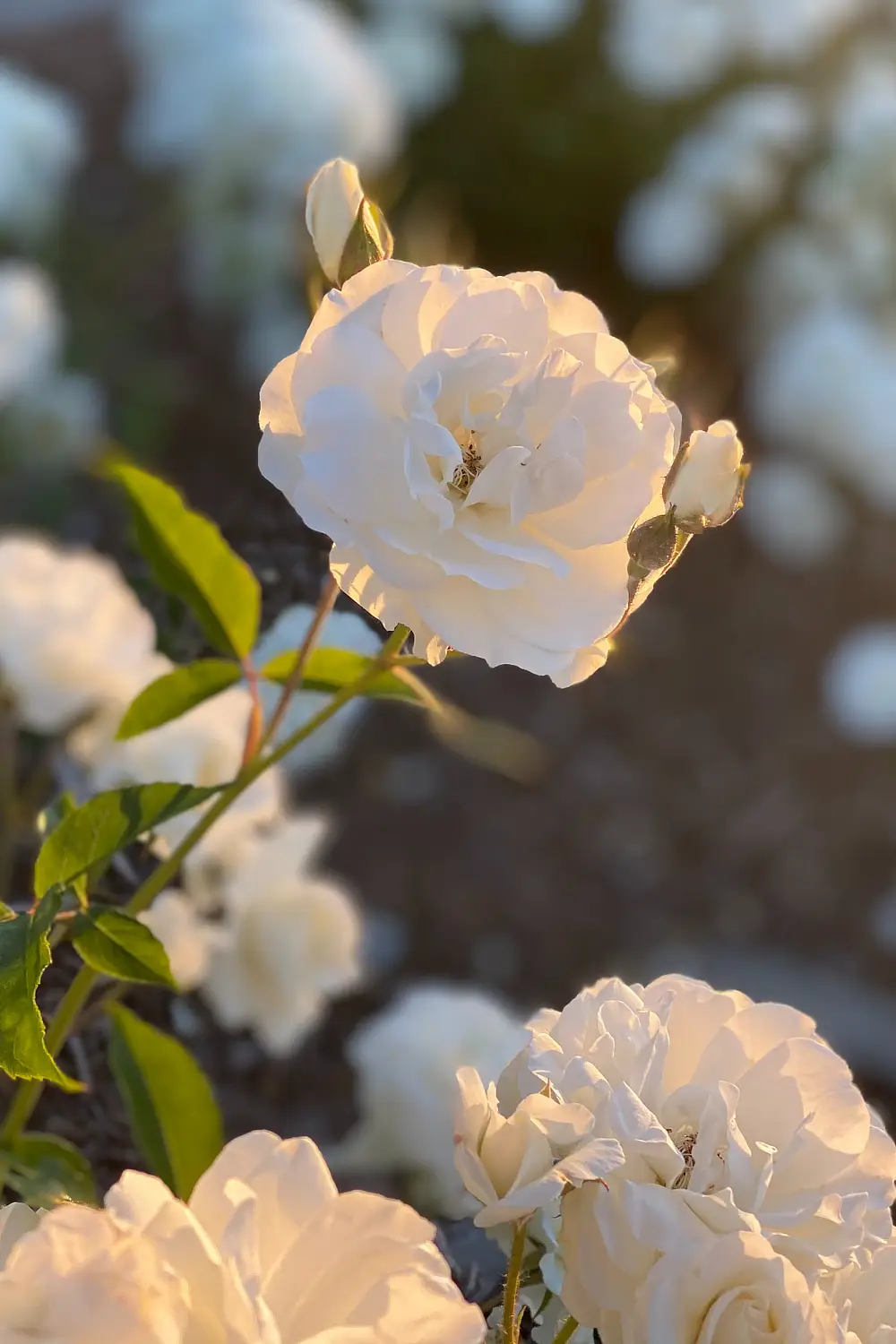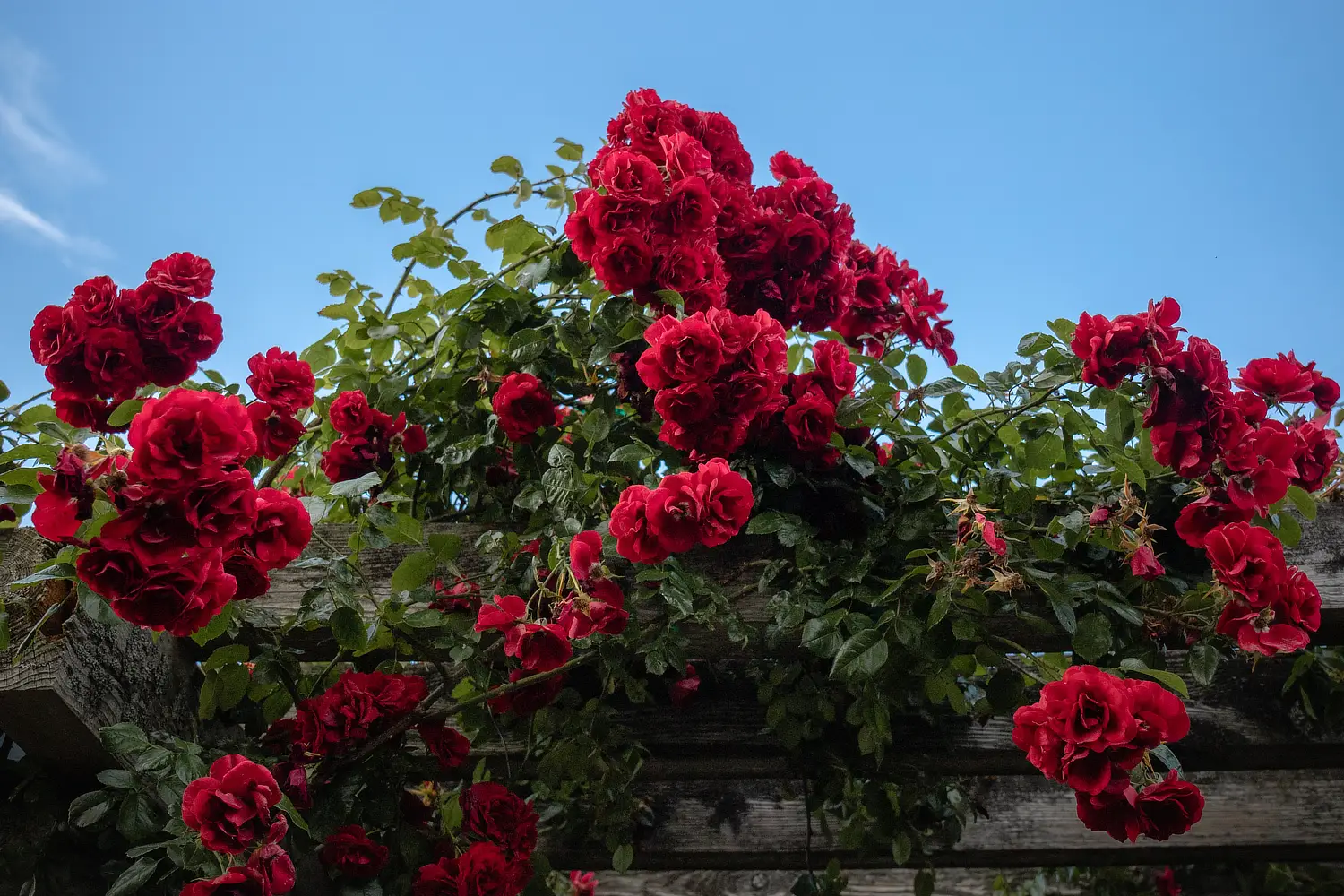Rose Pruning – It’s winter once again, so it’s now time to get on to thinking about pruning your roses to maximise their health and future blooms. Pruning is an important role with roses as it helps to reduce diseases, control pests, allow more light and air circulation into the plant all to produce bigger and better flowers come spring.
You need to prune your roses twice a year, firstly in summer where you remove dead flowers. This dead heading of the plant will promote a new flush of flowers as you break the lifecycle of the plant, and it tries to create more seeds by creating more flowers. Getting old petals off the plant will also stop it from getting and spreading fungal problems when the new blooms arrive as it increases airflow and removes material for spores to grow on.
The second time you need to prune your roses is in winter and this time you need to be much harsher to promote new growth. The best time for this secondary prune is in June or July but if you live in an area of cold and experience frosts then wait until early august as the cold can harm the fresh new shoots.
Start by removing dead or black wood, or anything that has signs of disease and remove this as low as possible on the plant. Take these clippings and dispose of them in the bin not the compost as you run the risk of spreading problems throughout the whole garden when you apply the compost at a later date.
You are then trying to achieve an open vase shape with the plant as this allows good air flow through the foliage. Humid conditions breed fungal problems and weaken the rose, so an open structure is best. To achieve this start by taking out spindly and weak growth, follow it back to the main stem where it gets to the thickness of a pencil and remove it at that point. You want to prune back to an outward facing bud, if you prune to one that faces to the centre of the crown of the plant you will get further congestion in the foliage and have to prune back again in no time, this method will also ensure your flowers are on the outside of the plant where you can enjoy them not on the inside of the canopy.
It’s not always possible to make the correct angle of cut but try to aim for a slope away from the bud at about 45 degrees. By sloping away from the bud, you move water away from any spots where it can collect and cause fungal diseases down the line.
Also look for crossing and rubbing stems and remove them too, ideally all new shoots will face outwards to achieve the open cup look. Don’t be afraid to be really harsh with your roses, removing large sections of an old plant that has got unsightly or overcrowded will rejuvenate the rose to produce new fresh growth, if you are nervous about this don’t worry removing a third of the plant is totally normal and safe and will not kill the rose.
When pruning look out for young shoots often referred to as water shoots, these are a light green and could almost be a washed out red in colour. These are the shoots that will produce flowers so you want them to be undamaged, if long and spindly just remove the tips to promote shooting, which in turn will produce more blooms.
Heritage roses need a little less pruning than say an iceberg or bush rose will need, prune to shape removing any dead bits, with the same outward facing and 45% pruning principals as stated. These plants perform best when tip pruned as this will produce many stems for flowers. Ground cover roses on the other hand can be cut right back to almost nothing and with a little feed, water and mulch will be full and blooming by mid spring.
Once you have finished pruning you will need to spray and fertilise the plant. When the plant is fully bare of leaves spray it with lime sulphur, this will kill off any scale or fungal issues it may have been experiencing, again remove any leaves from the ground into the bin and not the compost pile.
Wait three weeks after pruning before you apply a rose specific fertiliser, you’ll notice the plant starting to shoot so feed well to support this growth. It’s important you water your fertiliser in well too so the plant can take it up and use the nutrients you have given it.




